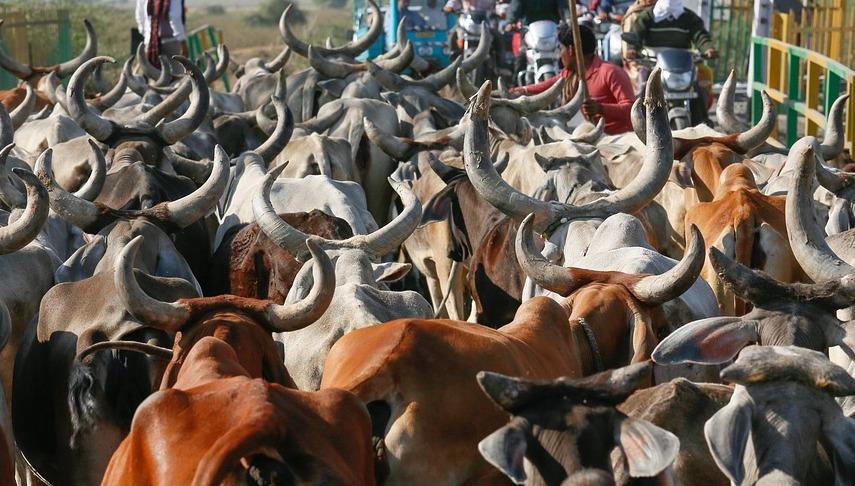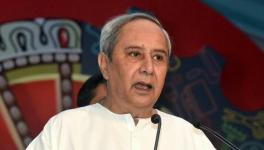Ban on Cattle Sale for Slaughter: Is it the First Step in Corporatising the Meat Value Chain?

Cattle Market in India, Image Courtesy: pixabay.com
The Prevention of Cruelty to Animals (Regulation of Livestock Markets) Rules, 2017 were published on May 25, 2017, just days before the commemoration of the third anniversary of the Modi government. Through these rules, the government has effectively dealt a blow to small producers and the farmers who sell their unfit animals to traders and commission agents in the livestock markets. Further, the foundations of meat export industry are also steeped in informal supply lines and trading networks which supply cattle to ‘modernised slaughter houses’. Hence, the ban on sale of cattle for slaughter is not only communal but also essentially an anti-working class step. It thus has to be decoded in its entirety.
The Rules of 2017 and the Falling Prices of Cattle
Though cow slaughter bans have been in place in several states, especially since the Modi government came to power, but this is the first time that the central government has taken the plunge to impose a slaughter ban through the backdoor. The notified rules clearly state in section 22 of the notification that all purchasers of cattle will give an undertaking to certify that the sale of animals is for ‘agricultural purposes and not for slaughter’. Further the rules put a moratorium on the resale of the cattle for six months and also on inter-state sale of cattle. This will effectively ensure that there are no suppliers of cattle to even exporters. Once the livestock market rules are applied, farmers will no longer sell in competitive market places but at the farm gate at much lower prices, lowering the bargaining power of the farmer vis-à-vis the trader who supplies cattle to the companies.
Experience from states where the ban has been operational before the formulation of these rules, shows that the prices of unfit cattle have plummeted once the slaughter ban has come into force. As SP Sabherwal, general secretary of The Meat and Livestock Exporters Association explains, “This (the ban) is a major change that will hit farmers more than meat exporters, who will also be hit. Currently, we buy buffaloes that are unable to produce milk and are too old to breed through middlemen who bid for these animals at cattle markets. These sell for about Rs 20,000-25,000 a buffalo. If farmers sell at the farm gate, he will sell at whatever is paid to him, and it will certainly be lower than the rate discovered after bidding at a market”. In keeping with this analysis, the price of unfit cattle has plummeted with the ban in states like Maharashtra. As a study records, the price of milch cows fell from around Rs 65,000 to Rs 50,000 per animal and those of male calves, bulls and old cows from Rs 18,000-19,000 to Rs 15,000-16,000. The cycle of selling old and unusable animals, and replacing these with new animals, has been completely disrupted, creating utter havoc.
But, such havoc is not only linked to the lack of buyers of ‘unfit cattle’. It is linked to the specific links between the milk and the meat producing industry. As is explained by many analysts, there are no separate cattle breeding programmes for meat and milk within Indian markets. The suppliers of cattle for the meat industry are the same farmers who initially rear their cattle for milk production. It is only once these cows become unproductive in terms of milk production that they are sold for meat production. Hence, unlike in many other countries of the world such as Australia and the US, there is no specialised breeding for meat production. But in the event that cattle can be only sold for agricultural purposes farmers will be forced to do distress sales of low productive cattle. These instances have come to light in places where the ban is already in force. For example, a report from Maharashtra showed that cows producing 20 litres a day are currently fetching roughly Rs 45,000 at the weekly cattle market, the largest in northern Maharashtra. A year ago, these rates averaged Rs 80,000 per animal. The same goes for bulls: prices of four-year-old animals in good health have fallen from Rs 50,000 to Rs 30,000 in the last one year. Similarly another cattle trader explained that earlier he used to sell ten cows a day but now he is barely able to sell two cows a day. Another farmer reported that he sold his young cows for Rs 20,000 each after the ban, whereas ordinarily they would have fetched Rs 60,000 each. This type of distress sale is likely to increase and impact on the farmer’s income as sale of cattle constitutes an important supplementary income, especially since the notification also includes buffaloes within its ambit. It is well known that India is one of the foremost exporters of buffalo meat, so the cost of buffaloes would also be impacted.
Potential for Reorganising the Meat Supply Chain
In this context, it is interesting that most of the meat exporting industry has only termed the ban as ‘anti-farmer’ and acknowledged that the ban may not impact its own interests much. This is largely because the cattle sale ban is likely to force a change in the supply dynamics of the industry. It would not be surprising if the government comes up with a subsidised breeding programme under the PPP model. The operational guidelines of the National Livestock Mission which were revised in 2015-16 have targeted the salvaging and rearing of young buffalos as one of the main employment generation programmes. Though this scheme is not a new one it got a fresh thrust with increased allocations to the livestock mission in the last budget. The components of the scheme are three fold: setting up individual units (mostly for dalits, adivasis and women); commercial units and industrial units. It is pertinent to note that this scheme is not only open to farmers or youth, but also to companies, partnerships and corporations. Since the entire scheme is based on credit lines from NABARD, beneficiaries will have to ensure that they have a market for their buffalos, and this where they will be forced to tie up with the corporation. Hence the main thrust of the scheme is the preparation of raw materials for the leather and meat exporting industries. The cattle sale ban for slaughter seems to be aimed at squeezing the cattle market so that the farmer is forced to make distress sales to large slaughter houses. Under the current situation, the National Livestock Mission will only aid this process.
Given this scenario, it is also obvious that slaughter houses serving the domestic meat markets will suffer. And it is here that the government has used the backdoor method of introducing a measure that will make access to beef virtually impossible for the local consumer. This aspect has especially been highlighted in the Kerala government’s prompt response to the slaughter ban. Further, even if there is no ‘official ban’ on beef eating, consumers will be forced to buy beef from super markets that will form one end of the domestic supply chain. This is likely to result in closing down of small meat retailers. If they are to survive in the market, they will have to arrive at market arrangements with the corporate meat producers, or even become franchises of business houses who can afford to access cattle at the farm gate. Hence the cattle sale ban is not just a cultural move, but its economic logic is grounded soundly in support for corporate capitalism. Or rather, it is the best example of Modi government’s corporate Hindutva which attempts to impose its cultural hegemony and at the same time protect the interests of corporate players.
Disclaimer: The views expressed here are the author's personal views, and do not necessarilyrepresent the views of Newsclick
Get the latest reports & analysis with people's perspective on Protests, movements & deep analytical videos, discussions of the current affairs in your Telegram app. Subscribe to NewsClick's Telegram channel & get Real-Time updates on stories, as they get published on our website.























